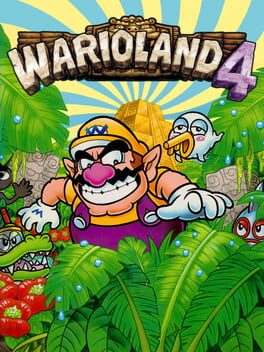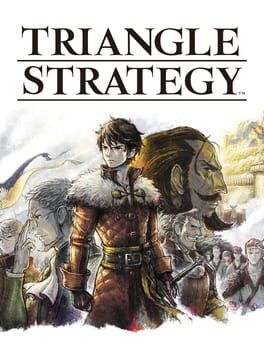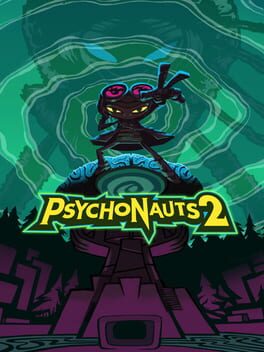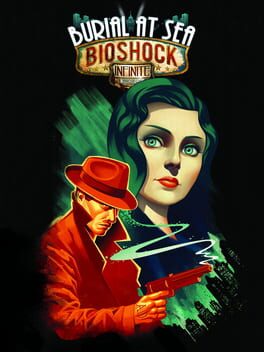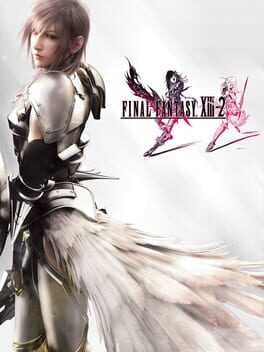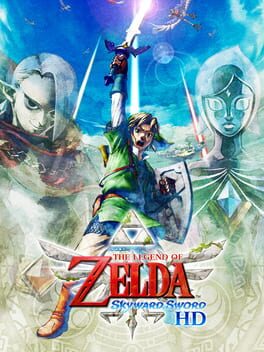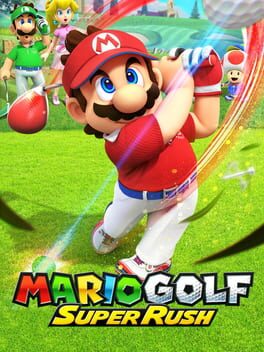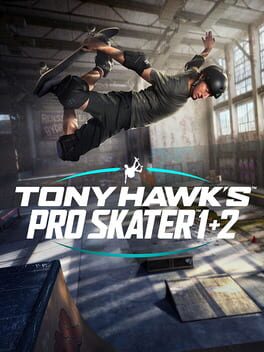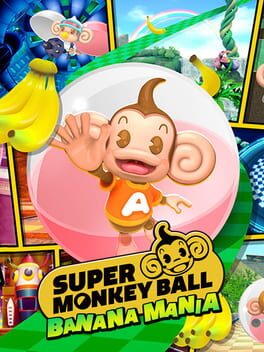TheMirzai
21 Reviews liked by TheMirzai
The number of times this game hands control of a character over to you, just to make you walk them forward 20 feet so the next cutscene can happen, but also you’re forced to walk (or even crawl!) slower than anyone’s ever walked (or crawled!) in the history of the universe so that it takes an entire minute of my life to traverse those 20 feet, and also there’s absolutely nothing else of interest happening around you during that minute, there’s just some person or thing on the other side waiting for you to finish approaching...yeah that’s some groundbreakingly stupid game design right there
But man the stuff that’s good is so good
But man the stuff that’s good is so good
Killer7
2005
Bloodborne
2015
Wario Land 4
2001
Triangle Strategy
2022
The second playthrough fell a bit flat, but the game remains great nontheless.
Triangle Strategy features an intricate story that can be played and enjoyed multiple times, as intended in the games' design. Decisions have consequences and shape the turn of events and players can see up to four different endings yada yada this has been done many times and what's actually setting this game apart: the story is pretty good on a subsequent try and if you enjoy political mysteries this game's gonna be a field trip. It's not the most complicated thing, but many twists can be foreseen just the right amount of time and a few will surprise you like red circles on a clickbait thumbnail.
Story-wise I cannot regret playing this again, but the gameplay elements were not balanced at all. So you really feel like the person responsible for common sense in game design did not show up for work at a certain point. Places visited before will not contain new items, and battles yield the same loot that they did beforehand. So you need high-tier materials and a lot of money and the game gives you three bananas. Leveling up in the second playthrough is more of a nuisance. There are plenty of characters to recruit and even more are playable in later playthroughs, but you cannot equip and pull up their stats fast enough and the game becomes a grind festivity. This is such an oversight in an overall well developed game.
As for positive elements of gameplay the developers outdid themselves on the flow of battles. Even though they can be long, it never feels boring to play them out. Difficulty can be changed anytime and whenever you lose a battle you don't lose the EXP gained by the characters. This is massive and I hope this will be the gold standard mechanic in all future games of this genre. Overall it was a nice experience.
Triangle Strategy features an intricate story that can be played and enjoyed multiple times, as intended in the games' design. Decisions have consequences and shape the turn of events and players can see up to four different endings yada yada this has been done many times and what's actually setting this game apart: the story is pretty good on a subsequent try and if you enjoy political mysteries this game's gonna be a field trip. It's not the most complicated thing, but many twists can be foreseen just the right amount of time and a few will surprise you like red circles on a clickbait thumbnail.
Story-wise I cannot regret playing this again, but the gameplay elements were not balanced at all. So you really feel like the person responsible for common sense in game design did not show up for work at a certain point. Places visited before will not contain new items, and battles yield the same loot that they did beforehand. So you need high-tier materials and a lot of money and the game gives you three bananas. Leveling up in the second playthrough is more of a nuisance. There are plenty of characters to recruit and even more are playable in later playthroughs, but you cannot equip and pull up their stats fast enough and the game becomes a grind festivity. This is such an oversight in an overall well developed game.
As for positive elements of gameplay the developers outdid themselves on the flow of battles. Even though they can be long, it never feels boring to play them out. Difficulty can be changed anytime and whenever you lose a battle you don't lose the EXP gained by the characters. This is massive and I hope this will be the gold standard mechanic in all future games of this genre. Overall it was a nice experience.
Triangle Strategy
2022
A masterclass in tactical RPGs. Beautful spritework, a gripping plot that has 4 REAL, satisfying endings and tons of character moments and time spent off the battlefield. The soundtrack isnt super memorable, but its still great, offering grand orchestral pieces for battles and stripped back piano melodies for quiet moments. Every minute of the 30+ hour campaign feels earned, because much like Game of Thrones, the focus isnt just on the main characters. Its a grand narrative jumping between the political struggles of three countries (totally not Starks, Lannisters and Qarth) constantly.
I love the political intrigue and the focused, stripped back class system, making for a strategy RPG that manages to balance a busy storyline and create a gameplay system that doesnt collapse on itself. Focusing on fixed roles for each unit, but offering enough different ones to provide the typical class system variety. I like this because it makes sense. In the ever important story, Erador is a knight, Anna is a spy, Hughette is a mounted archer. Why does making them switch make sense?
Only issue I had was the voice acting, which varied from local Shakespeare production to high school student reading Animal Farm to the class. Maybe throwing voice actors you found on Newgrounds tons of old english dialogue with BIG WORDS is going to backfire?
All things considered, this is my GOTY going into the end of the year.
I love the political intrigue and the focused, stripped back class system, making for a strategy RPG that manages to balance a busy storyline and create a gameplay system that doesnt collapse on itself. Focusing on fixed roles for each unit, but offering enough different ones to provide the typical class system variety. I like this because it makes sense. In the ever important story, Erador is a knight, Anna is a spy, Hughette is a mounted archer. Why does making them switch make sense?
Only issue I had was the voice acting, which varied from local Shakespeare production to high school student reading Animal Farm to the class. Maybe throwing voice actors you found on Newgrounds tons of old english dialogue with BIG WORDS is going to backfire?
All things considered, this is my GOTY going into the end of the year.
Psychonauts 2
2021
When I played through the first game, I game it a sort of middling review; the plot and design ethos were perfect, the tone was wonderfully funny without undermining it's characters, and it was so irreverent and caustic but at the same time so kind. But the gameplay was very difficult to adjust to; the physics were bad, Raz was incredibly floaty (and not just when he's meant to be) and the difficulty ramp was weird. I went into Psychonauts 2 extremely optimistic, having heard that it stayed true to the tone of the first game, now with much better combat and more consistent physics.
I went in optimistic and was thoroughly blown away. The gameplay is wonderful; movement is fast, snappy, and satisfying. Combat is much faster, and Raz can use multiple psy-powers at once. It's honestly some of the best, if not THE best combat I've EVER seen in a platformer game. The combat doesn't feel like a break from the platforming, but like it builds upon what's already there, and neither platforming nor combat distracts from the other. By the end of the first game I'd given up on anything resembling completionism; I didn't enjoy moving around the world enough to keep doing it more than I had to to progress the plot. But in this one, I put off the final section for three days because I was having so much fun with the gameplay and didn't want it to end.
And the plot and design! The game hasn't lost any of its stellar artistic sensibilities; the most beautiful levels of the first game are easily matched or outdone by every level in this one. And the first's plot is built upon in a genuinely beautiful way, making way for a deeper story, more characters, and all without losing any of the personality that made the first one feel so...well, personal. I loved the new characters and their relationships with each other; Bob and Helmut especially. I won't get into spoilers, but the game's overarching theme of 'people can do horrific, irredeemable things without being horrific, irredeemable people' is so, so lovely, and delivered with such empathy and care.
I have my personal quibbles, of course (Donatella you need to apologize properly to your son for being passive-aggressive and guilt-slingy!!!!) but honestly, I wouldn't hesitate to call this a very nearly perfect game. It's gorgeous, it's unique, the story is incredible and the gameplay feels really, really good. One of the best games I've ever played for sure.
I went in optimistic and was thoroughly blown away. The gameplay is wonderful; movement is fast, snappy, and satisfying. Combat is much faster, and Raz can use multiple psy-powers at once. It's honestly some of the best, if not THE best combat I've EVER seen in a platformer game. The combat doesn't feel like a break from the platforming, but like it builds upon what's already there, and neither platforming nor combat distracts from the other. By the end of the first game I'd given up on anything resembling completionism; I didn't enjoy moving around the world enough to keep doing it more than I had to to progress the plot. But in this one, I put off the final section for three days because I was having so much fun with the gameplay and didn't want it to end.
And the plot and design! The game hasn't lost any of its stellar artistic sensibilities; the most beautiful levels of the first game are easily matched or outdone by every level in this one. And the first's plot is built upon in a genuinely beautiful way, making way for a deeper story, more characters, and all without losing any of the personality that made the first one feel so...well, personal. I loved the new characters and their relationships with each other; Bob and Helmut especially. I won't get into spoilers, but the game's overarching theme of 'people can do horrific, irredeemable things without being horrific, irredeemable people' is so, so lovely, and delivered with such empathy and care.
I have my personal quibbles, of course (Donatella you need to apologize properly to your son for being passive-aggressive and guilt-slingy!!!!) but honestly, I wouldn't hesitate to call this a very nearly perfect game. It's gorgeous, it's unique, the story is incredible and the gameplay feels really, really good. One of the best games I've ever played for sure.
The first half of this BioShock Infinite apology tour leaves much to be desired. As a staunch fan and defender of the core game's narrative despite its rampant flaws, Burial at Sea: Episode One seems content to make sure the BioShock critic of every stripe is dumbfounded and disappointed. Can I safely say this is Ken Levine's The Rise of Skywalker? I'll need to play the second part before I hand down that guilty verdict. Regardless, much of the problems from the base game carry over here: laborious FPS arenas, lacking level design, and the added bonus of copious 'member berries for fans of the original BioShock, all tied together into a narrative that undercuts BioShock Infinite's ending and adds more fuel to the fire for anyone with a negative disposition towards that game anyway. If I wasn't just coming off of revisiting BioShock Infinite, I'd probably call this expansion "perfectly cromulent." It isn't, however. It is remarkably worse.
Final Fantasy XIII-2
2011
Half-hour sections of truly inspired gaming layered between long sections of backtracking, fetching, and repeating things you have already done. Motion focused gameplay leads to mixed results but the successes outnumber the failings.
The sword fighting is unique and they do clever things with the precision aiming/analog sword control. I played almost exclusively in stick control "motion controls turned off" and while flicking the stick in a specific direction lead to some aggravation in some instances I feel like it was a net positive because by the end of the game the sword fighting is what I looked forward to.
The biggest negative I can hold against the game is it is just PADDED. If they would have boiled down the great parts of the game this would have been a classic. I get the impression they wanted to stretch the content out a little farther than they had fresh ideas for. You fight essentially the same boss 3 times... multiplied by 2 different bosses.
In the end, I enjoyed it. Sometimes I hated it. By the end I was glad to be done with it. It is near the bottom of the list of mainline Zelda games but not because it is a failure but due to the high quality of the series over the years.
The sword fighting is unique and they do clever things with the precision aiming/analog sword control. I played almost exclusively in stick control "motion controls turned off" and while flicking the stick in a specific direction lead to some aggravation in some instances I feel like it was a net positive because by the end of the game the sword fighting is what I looked forward to.
The biggest negative I can hold against the game is it is just PADDED. If they would have boiled down the great parts of the game this would have been a classic. I get the impression they wanted to stretch the content out a little farther than they had fresh ideas for. You fight essentially the same boss 3 times... multiplied by 2 different bosses.
In the end, I enjoyed it. Sometimes I hated it. By the end I was glad to be done with it. It is near the bottom of the list of mainline Zelda games but not because it is a failure but due to the high quality of the series over the years.
EarthBound
1994
It's been a while since I played a golf game, but I enjoyed the new swing mechanics this game introduced. It's easy to pick up, but hard to master.
The speed golf, on the other hand, is a miss for me. I can understand how it might be fun for a few multiplayer matches, but it's largely antithetical to what makes golf games fun for me: taking my time to make deliberate, accurate shots.
The adventure mode is a bit of a mess and feels like a first draft of ideas rather than a polished experience.
The lack of content the game had at launch has been mostly solved by updates. The game launched with only 6 courses but now has 11, as well as a few extra modes. It's great more courses were added, but It's not a good look for Nintendo to withhold content for DLC that should have been a part of the base game.
The courses, while not bad, feel like a missed opportunity. Most have a distinct visual look but feel largely the same when playing. The New Donk City course is great, and I would have loved to see more Mario-themed courses. An Island Delfino Course, a Galaxy Course... even just a standard Mushroom Kingdom course would have been welcome.
Overall, I still had fun playing the game because the core golf gameplay is fun. If you're thinking about picking it up, it's probably best to go in with low expectations.
The speed golf, on the other hand, is a miss for me. I can understand how it might be fun for a few multiplayer matches, but it's largely antithetical to what makes golf games fun for me: taking my time to make deliberate, accurate shots.
The adventure mode is a bit of a mess and feels like a first draft of ideas rather than a polished experience.
The lack of content the game had at launch has been mostly solved by updates. The game launched with only 6 courses but now has 11, as well as a few extra modes. It's great more courses were added, but It's not a good look for Nintendo to withhold content for DLC that should have been a part of the base game.
The courses, while not bad, feel like a missed opportunity. Most have a distinct visual look but feel largely the same when playing. The New Donk City course is great, and I would have loved to see more Mario-themed courses. An Island Delfino Course, a Galaxy Course... even just a standard Mushroom Kingdom course would have been welcome.
Overall, I still had fun playing the game because the core golf gameplay is fun. If you're thinking about picking it up, it's probably best to go in with low expectations.
It's kind of hard for me to overstate how big a part of my childhood and very-early teenage years the Tony Hawk's Pro Skater series was. I would play basically every game released, 100%'d 2, 3 and Underground 2 more times than I can count, and so much of my early music taste came from this series too. No doubt I'm one of countless people who in their childhood excitedly started trying to learn to skateboard after too-much-time playing these games only to be quickly rushed to hospital due to breaking a bone (my poor arm).
Playing THPS 1+2 was understandably an intense nostalgia-trip. Even just beyond being really cool to impressionable-young-me, the two games that were remade here were such a wonderful mixture of sports game, arcade game, and 3d platformer, blending genres in a way that was legitimately exciting at the time and would spawn a wave of imitators in the following few years. THPS 1+2 is extremely faithful to these originals in terms of feel and intent, whilst updating it in ways that are nearly unanimously positive; adding in the best portions of the move-sets from later games so that you can flow around levels much more naturally, and reworking the visual design of the game to compliment the much-improved graphics.
Sadly these games have lost something through the years, and whilst this game is certainly an improvement over the originals (it's hard for me to imagine returning to the first Tony Hawk's game's extremely limited move-set) there are certainly moments when it feels like all these updates somehow make some of the wrinkles more noticeable; some of the fetch-quest items just blend into their surroundings for how detailed everything surrounding them is. Maybe trying to hunt down five "don't skate" signs hidden throughout a level on a 2 minute timer only to be forced to find them all again when you can't for the life of you figure out where the fifth one is just fundamentally hits a bit different over two decades later. Being asked to locate five homeless people and jump over them in a specific order definitely hits different (seriously, how not punk can you possibly get??). Time is not always kind.
So the experience was certainly largely fun, and great to return to after all these years, but also very much flawed, bearing the weight of time on its shoulders. It took me about four hours to 100% the first and second game content after which I struggled to find much more to do. I could play through the game again with a different character, something that appealed to me greatly when I was a kid, but there's so much else I can do with my time nowadays that it's hard to sell me on what largely amounts to running back the same experience all over again. I put a few hours into the speedrun mode and it was fine, but trying to find scripted routes through levels really detracts from the free-flowing, expressive nature of the movement for me. The game seems to have an expectation that you'll put a lot of time into it considering its levelling and challenge systems, but I think I'm largely done with the game for now; content with my experience, grateful to have had this opportunity to revisit a freshened-up version of something that was once very important to me, but also very ready to move on to something a bit more substantial.
Playing THPS 1+2 was understandably an intense nostalgia-trip. Even just beyond being really cool to impressionable-young-me, the two games that were remade here were such a wonderful mixture of sports game, arcade game, and 3d platformer, blending genres in a way that was legitimately exciting at the time and would spawn a wave of imitators in the following few years. THPS 1+2 is extremely faithful to these originals in terms of feel and intent, whilst updating it in ways that are nearly unanimously positive; adding in the best portions of the move-sets from later games so that you can flow around levels much more naturally, and reworking the visual design of the game to compliment the much-improved graphics.
Sadly these games have lost something through the years, and whilst this game is certainly an improvement over the originals (it's hard for me to imagine returning to the first Tony Hawk's game's extremely limited move-set) there are certainly moments when it feels like all these updates somehow make some of the wrinkles more noticeable; some of the fetch-quest items just blend into their surroundings for how detailed everything surrounding them is. Maybe trying to hunt down five "don't skate" signs hidden throughout a level on a 2 minute timer only to be forced to find them all again when you can't for the life of you figure out where the fifth one is just fundamentally hits a bit different over two decades later. Being asked to locate five homeless people and jump over them in a specific order definitely hits different (seriously, how not punk can you possibly get??). Time is not always kind.
So the experience was certainly largely fun, and great to return to after all these years, but also very much flawed, bearing the weight of time on its shoulders. It took me about four hours to 100% the first and second game content after which I struggled to find much more to do. I could play through the game again with a different character, something that appealed to me greatly when I was a kid, but there's so much else I can do with my time nowadays that it's hard to sell me on what largely amounts to running back the same experience all over again. I put a few hours into the speedrun mode and it was fine, but trying to find scripted routes through levels really detracts from the free-flowing, expressive nature of the movement for me. The game seems to have an expectation that you'll put a lot of time into it considering its levelling and challenge systems, but I think I'm largely done with the game for now; content with my experience, grateful to have had this opportunity to revisit a freshened-up version of something that was once very important to me, but also very ready to move on to something a bit more substantial.
I like it, I wanted to like it more.
I picked this game up because I felt I should at least try all ten of the all-time top-rated games on Metacritic; I had already decided that I was going to play one of the SoulCalibur sequels instead of the original, so I let my impatience get the best of me and downloaded the Tony Hawk remaster instead of waiting for the old discs to come in the mail. I had some sense that I might have made a mistake, and after playing through the remaster far enough to get all 6 medals and nearly max out my create-a-skate character's stats I think my gut was right.
I never really played the Tony Hawk games when I was a kid. I watched my brother play them, but I couldn't really understand what he was doing and had no idea how to pull off any moves or combos. I remember almost every time we went to a particular cousins' house we would all end up passing around the controller for Tony Hawk 3, and the Underground and Wasteland games seemed to be the ones that most commonly graced our own screen at home. Watching somebody else play Tony Hawk, it has a deceptive effortlessness; playing Tony Hawk, the particulars of the execution requires disguise how simple it really is.
The earliest games in the series are even more simple, not just in terms of more limited moveset or (presumably) smaller levels, but in the number of goals and the heights of expectations. Tony Hawk's Pro Skater has such compact levels with so few objectives littered throughout that beating all of them in a single 2-minute session seems well within the upper bounds of even the casual skill ceiling.
But even if you staple those first two games together, that could be less than a half-an-hour of content, with clunkier gameplay than fans are accustomed to on account of the more recent games. So, this game adds in the additional tricks and combo potential, but it doesn't stop there. It more than doubles the number of objectives per skatepark, it also massively inflates things like expected scores.
The high score challenge in the first stage of THPS1 is 5,000. The pro score is 15,000.
In the remaster, the high score is 10,000, the pro score is 50,000, and there is a third "sick" score to beat, 100,000.
But another thing to consider: doing all the objectives in a single run in the originals was a cool thing you could do. In the remaster, it's basically expected that you'll learn this. In fact, the remaster expects you to do quite a bit more than just play and beat the game. Re-emphasizing that I have "beaten" every level in the game, I have done about 30 or so of the more than 800 challenges in the game. Of course, plenty of these challenges are for things like the online multiplayer and course creation, but these are fistfuls of worms that I should probably scoop back into the original can that I opened a few paragraphs ago.
Tony Hawk's appeal, to me, is simplicity. This game is really complicated. In the old games, the low polygon count and the sparse number of objects make it so much easier to deduce what you can interact with, what your objectives are. In the original, you'll destroy big red signs; in the remaster, they're small, thin, and blend almost entirely into their surroundings.
In the original, you collect giant letters because it's a video game. In the remaster, the giant letters are holograms; the other floating objects you collect, fire hydrants, hard hats, toy robots, they're all holograms; when you wipe out and skip the animation to quickly re-mount your board, your character is a hologram. I'd guess it's some kind of bizarre attempt at realism, to dull the blow of the potentially immersion-breaking "gamey-ness" of these things, but it raises so many more questions than it answers, and the original questions could be so easily and satisfactorily answered by one simple truth: Tony Hawk's Pro Skater is a video game.
I picked this game up because I felt I should at least try all ten of the all-time top-rated games on Metacritic; I had already decided that I was going to play one of the SoulCalibur sequels instead of the original, so I let my impatience get the best of me and downloaded the Tony Hawk remaster instead of waiting for the old discs to come in the mail. I had some sense that I might have made a mistake, and after playing through the remaster far enough to get all 6 medals and nearly max out my create-a-skate character's stats I think my gut was right.
I never really played the Tony Hawk games when I was a kid. I watched my brother play them, but I couldn't really understand what he was doing and had no idea how to pull off any moves or combos. I remember almost every time we went to a particular cousins' house we would all end up passing around the controller for Tony Hawk 3, and the Underground and Wasteland games seemed to be the ones that most commonly graced our own screen at home. Watching somebody else play Tony Hawk, it has a deceptive effortlessness; playing Tony Hawk, the particulars of the execution requires disguise how simple it really is.
The earliest games in the series are even more simple, not just in terms of more limited moveset or (presumably) smaller levels, but in the number of goals and the heights of expectations. Tony Hawk's Pro Skater has such compact levels with so few objectives littered throughout that beating all of them in a single 2-minute session seems well within the upper bounds of even the casual skill ceiling.
But even if you staple those first two games together, that could be less than a half-an-hour of content, with clunkier gameplay than fans are accustomed to on account of the more recent games. So, this game adds in the additional tricks and combo potential, but it doesn't stop there. It more than doubles the number of objectives per skatepark, it also massively inflates things like expected scores.
The high score challenge in the first stage of THPS1 is 5,000. The pro score is 15,000.
In the remaster, the high score is 10,000, the pro score is 50,000, and there is a third "sick" score to beat, 100,000.
But another thing to consider: doing all the objectives in a single run in the originals was a cool thing you could do. In the remaster, it's basically expected that you'll learn this. In fact, the remaster expects you to do quite a bit more than just play and beat the game. Re-emphasizing that I have "beaten" every level in the game, I have done about 30 or so of the more than 800 challenges in the game. Of course, plenty of these challenges are for things like the online multiplayer and course creation, but these are fistfuls of worms that I should probably scoop back into the original can that I opened a few paragraphs ago.
Tony Hawk's appeal, to me, is simplicity. This game is really complicated. In the old games, the low polygon count and the sparse number of objects make it so much easier to deduce what you can interact with, what your objectives are. In the original, you'll destroy big red signs; in the remaster, they're small, thin, and blend almost entirely into their surroundings.
In the original, you collect giant letters because it's a video game. In the remaster, the giant letters are holograms; the other floating objects you collect, fire hydrants, hard hats, toy robots, they're all holograms; when you wipe out and skip the animation to quickly re-mount your board, your character is a hologram. I'd guess it's some kind of bizarre attempt at realism, to dull the blow of the potentially immersion-breaking "gamey-ness" of these things, but it raises so many more questions than it answers, and the original questions could be so easily and satisfactorily answered by one simple truth: Tony Hawk's Pro Skater is a video game.
It's Super Monkey Ball Deluxe with the new artstyle and a lot of extra fat. There are quite a few minute differences between BM and its source material, but the notable changes include a movement and camera system which don't appreciate small, minute movements and make it hard to move completely straight forward without veering to the side. I also expected a free-cam stage view. I had no reason to expect this, but I did, and it's not in the game. I appreciate that Banana Mania is high resolution, visually appealing, and separated its Challenge Mode into well-portioned level setlists, because Deluxe's setlists could go on for hours, and I like completing a Monkey and a Ball in one session. Despite its corporate pop artstyle, BM feels ever so slightly cheap in a couple places: guest characters provide no auditory exclamations whatsoever, and, despite having a large menu, the options are rather shallow, particularly camera options and control stick deadzone options. I couldn't find a setting which makes the camera feel comfortable, whether I'm moving it with the right stick, or the game is. Control stick deadzone issues also caused some problems at first, preventing me from going top speed while moving diagonally, making 8-7 "Warp" and 10-6 "Crazy Maze" unwinnable, but I found a fix in Steam controller settings. Overall, it all right. It tasteless and lukewarm. It remind me of me beer, which I like better. Seriously, play a GCN monkey ball back to back with Banana Mania, and you'll feel that the original games have incredibly responsive controls. There's no substitute for good physics... especially when that's all the game is.



